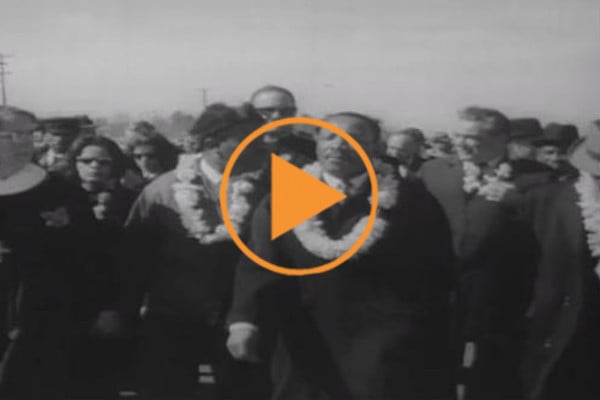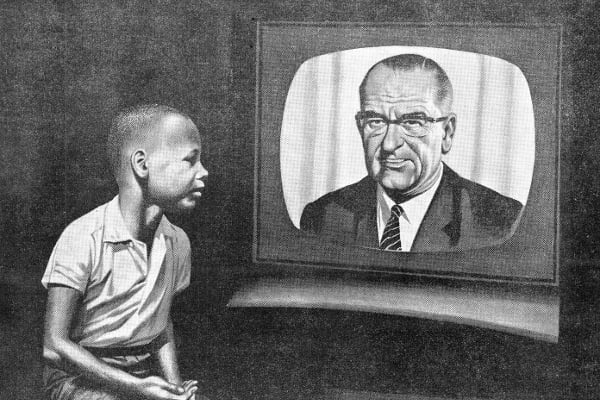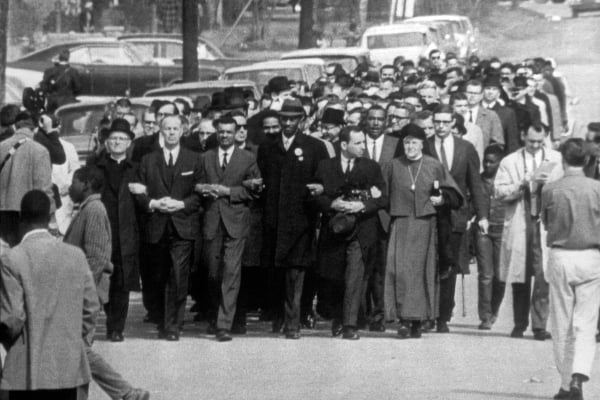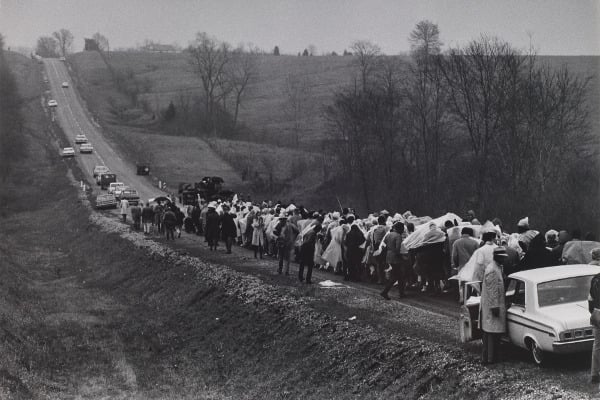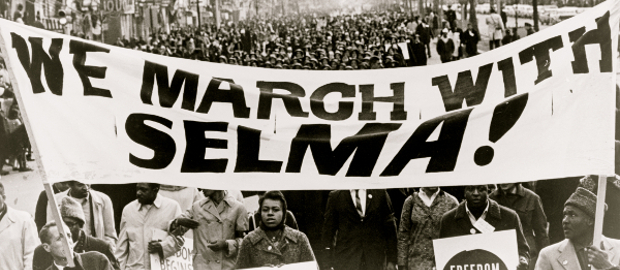
The March of Time: Selma to Montgomery
2015 marks a half century since the Civil Rights marches from Selma to Montgomery, Alabama. With the release of director Ava DuVernay’s Selma receiving several award nominations, we reflect on the historic fight against segregation and the continuing struggle for equal rights for all.
Before you buy your movie tickets, we have surmised a brief history of events that unfolded 50 years ago using the timeline from CNN’s Fast Facts.
1964: The Summer of Civil Rights
June 1964, as hundreds of student activist descended upon the state of Mississippi to support African American voter registration, three young men were reported missing. After a man hunt was launched, the charred car of James Chaney, Andrew Goodman and Michael Schwerner was found, and the three were believed to have been murdered by local officials and members of the Ku Klux Klan.
Although stories like these were tragically not unusual in Mississippi at this time, this was the first nationally reported case of white men [Andrew Goodman and Michael Schwerner] being targeted in connection to Civil Rights causes. This, however, gave the case much needed national attention and started a remarkable chain of events.
Selma to Montgomery: A Timeline
February 1965
Demonstrations over voter registration prompt Alabama Governor George C. Wallace to ban nighttime demonstrations in Selma and Marion.
February 18, 1965
During a march in Marion, state troopers attack the demonstrators. State trooper James Bonard Fowler shoots and kills Jimmie Lee Jackson.
March 7, 1965: Bloody Sunday
In a demonstration against segregation and voter discrimination, the first march involved over 600 protestors led by John Lewis and Hosea Williams.The intentionally peaceful demonstration was nicknamed “Bloody Sunday” as the marchers were greeted with police brutality and tear gas at the Edmund Pettus Bridge, turning them back to Selma.
March 09, 1965: Turnaround Tuesday
Martin Luther King, Jr. issues a call to action to clergy and public figures across the country to join them in Selma. After shocking news coverage of Bloody Sunday is seen, hundreds responded. With a new following of over 2,500, King leads another march to the Edmund Pettus Bridge. A largely symbolic protest, the crowd turns around at the police barricade.
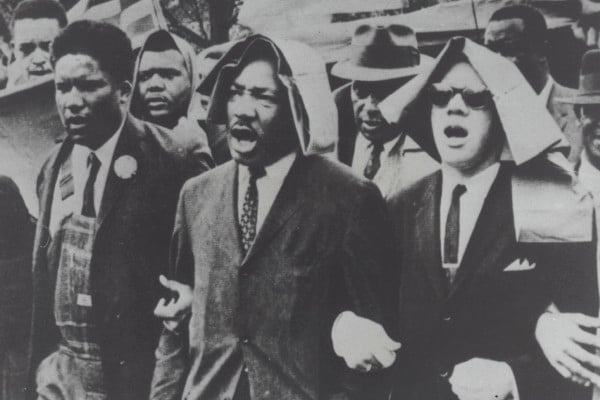
Martin Luther King taking part in a Civil Rights protest march, Montgomery, Alabama, 1965 / Peter Newark Pictures
March 9, 1965
President Lyndon Johnson speaks out against the violence in Selma and urges both sides to respect the law.
March 9, 1965
Minister James Reeb is attacked and killed by a group of white men in Selma.
March 10, 1965
The U.S. Justice Department files suit in Montgomery asking for an order to prevent the state from punishing any person involved in a demonstration for civil rights.
March 17, 1965
Federal District Court Judge Frank M. Johnson, Jr. rules in favor of the marchers.
March 18, 1965
Governor Wallace goes before the state legislature to condemn Johnson’s ruling.
March 19, 1965
Governor Wallace asks President Johnson for help, saying that the state does not have enough troops and cannot bear the financial burden of calling up the Alabama National Guard.
March 20, 1965
President Johnson issues an executive order authorizing whatever federal forces the Defense Secretary deems necessary.
March 21 – 25, 1965: The march to Montgomery
Amassing a crowd of 3,200 people, the marchers set off from Selma for Montgomery under the protection of federal troops. Averaging 12 miles a day and sleeping in fields at night, it was three days before they reached Montgomery.
By the time the crowd had reached nearby St. Jude, 25,000 people marched to the steps of the State Capitol building where King delivered his famous “How Long, Not Long” speech.
August 6, 1965
President Lyndon Johnson signs the Voting Rights Act of 1965.
Find Out More
See all images and clips of the Selma to Montgomery marches in the archive.
See the timeline on the CNN website.
All images in this article are sourced from bridgemanimages.com. Contact the Bridgeman sales team at nysales@bridgemanimages.com for more information regarding licensing, reproduction and copyright.

